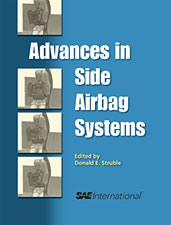Technical Paper
The Collision and Trajectory Models of PC-CRASH
1996-02-01
960886
This paper presents the trajectory and collision models on which PC-CRASH is based. PC-CRASH'S model for predicting the 3D kinematics of a vehicle's pre- and post-impact trajectory, which is based on a discrete- kinetic time forward simulation of vehicle dynamics rather than empirically-derived “spin-out coefficients”, is described. ...PC-CRASH is a windowso-based accident-reconstruction program which combines the simulation of pre-collision, collision, and post-collision dynamics for multiple vehicles in a graphical environment.

